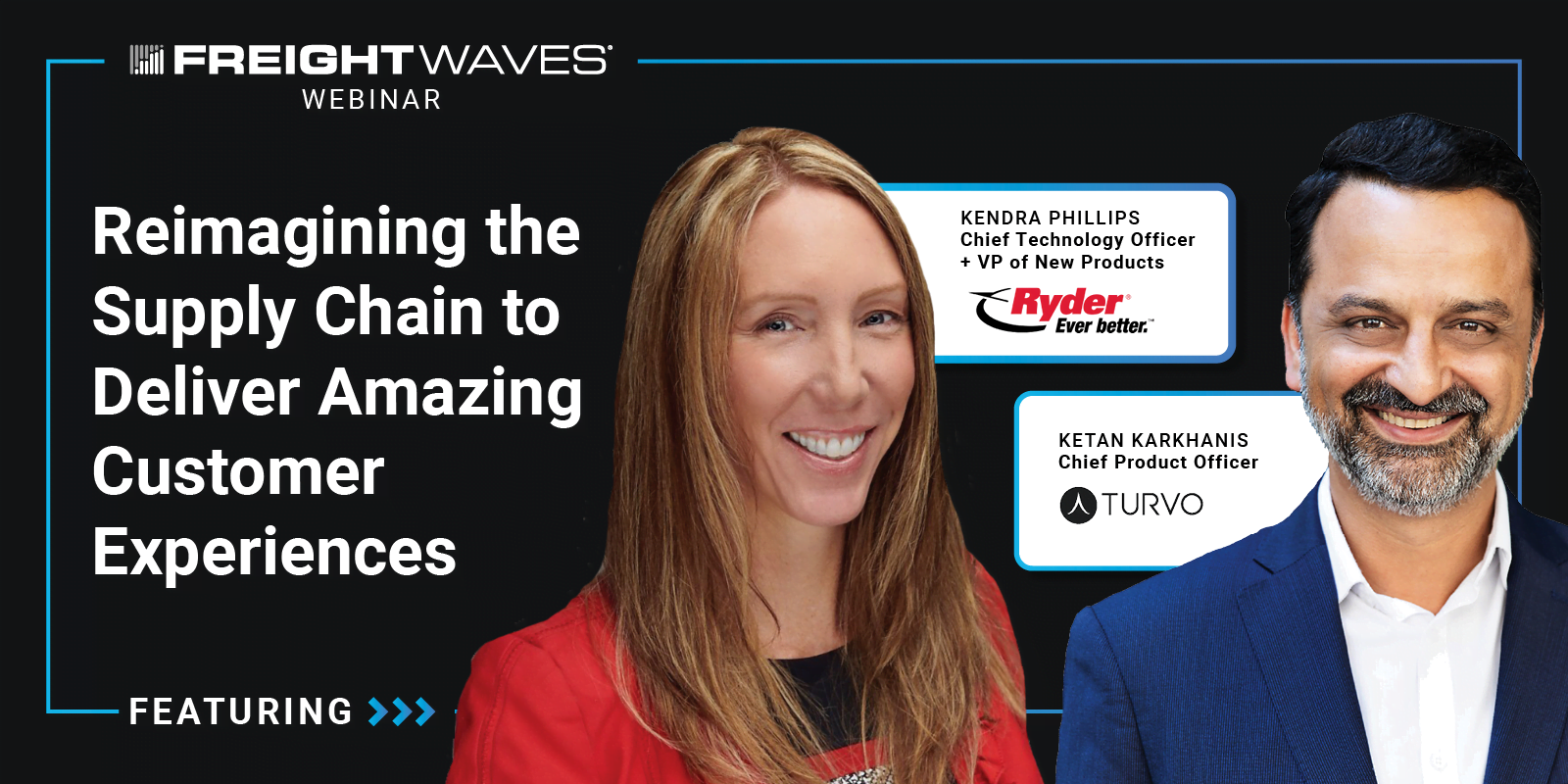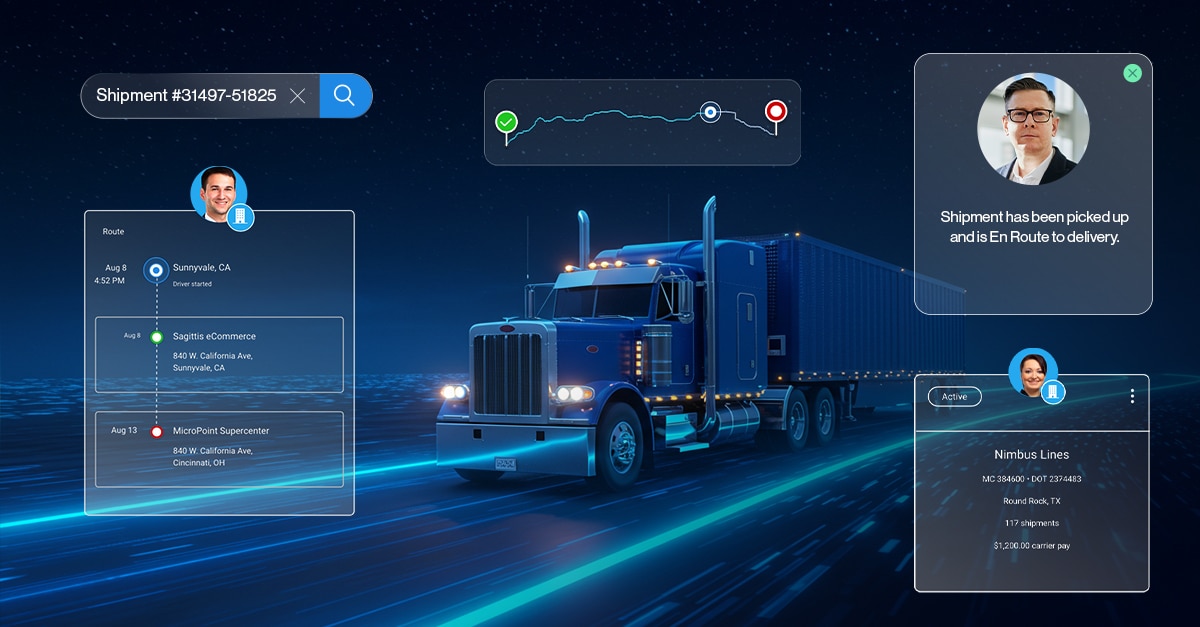As companies look for the next leap in the supply chain, innovation collaboration has become a key focus. Having interoperable digital systems create better experiences for everyone as it eliminates the friction and confusion caused by siloed systems and manual processes. But few companies have been able to make this vision a reality.
Turvo — the provider of the leading collaboration application for the supply chain — partnered with Ryder System to help them achieve just that. By unifying systems, streamlining operations, and creating enhanced visibility into inventory, orders, shipments, billing, and the customer experience in real-time, Turvo empowers Ryder to deliver better experiences for customers while increasing efficiencies across the supply chain.
In this on-demand webinar, Kendra Phillips, Chief Technology Officer and Vice President of New Product at Ryder System, and Ketan Karkhanis, Chief Product Officer at Turvo, showcase how Ryder uses the Turvo platform to reimagine the role of the supply chain in delivering an outstanding customer experience. Viewers can listen to the story of Turvo helping Ryder launch RyderShare and how the resulting Turvo-enabled platform Ryder efficiently serves customers today.
The Ryder + Turvo Partnership Puts the Customer at the Heart of the Supply Chain
Ryder System Inc. launched RyderShare in June of 2020, choosing to partner with Turvo to power its platform. Ryder looks to transform operations to align with its culture of a customer-first philosophy while consistently improving customer experience.
“There is a greater sense of urgency for real-time visibility in the supply chain and the tools that enable all parties involved to work together to ensure the on-time delivery of the goods we rely on every day,” said Steve Sensing, president of global supply chain solutions for Ryder. “RyderShare delivers these capabilities, as well as the analytics and insights to optimize networks – all delivered by logistics professionals with the experience to make meaningful changes.”
Turvo integrates silos of information, people, and systems in a unified platform. Ryder then integrates with its proprietary business intelligence, analytics, and insights to better equip its logistics professionals to make impactful changes in its customers’ supply chains.
Turvo’s multi-enterprise cloud experience enables Ryder and its customers and all other parties in its customers’ supply chains to share and collaborate like never before. As an extension of the company’s customer-first philosophy, the digitization of customer experience will help Ryder enable their customers to shift the supply chain’s role from a cost center to a value center.
The Shifting Role Of The Supply Chain From A Cost Center To A Value Center
In the webinar, Phillips and Karkhanis address the shifting role of how the C-suite views supply chain operations. For many decades, supply chains have been viewed as a cost center where managers worked to squeeze out costs, as lowering expenses was an immediate improvement to a company’s bottom line.
However, that’s changing as technology has vastly disrupted consumer expectations. Often called “The Amazon Effect,” these expectations result from Amazon’s obsession with putting the customer at the heart of the supply chain — making the delivery of products speedy, transparent, and a great experience. Changing consumer habits has forced companies to create a similar supply chain experience, putting pressure on supply chain officers to work across the organization to align supply chain practices and improve customer experience.
In this shift, CEOs are now looking at the supply chain, not as a cost center but as a strategic function of the business to create a competitive advantage and gain market share by delivering a better customer experience above their competition.
“If technology is not fueling agility, you’re investing in the wrong technology,” said Karkhanis. In short, supply chain officers need technology that allows supply chains to respond to market changes and pivot quickly, always to position the supply chain to serve the customer’s needs rapidly.
To reinforce this need for agility, Karkhanis and Phillips shared a Ryder customer story who deployed RyderShare, powered by Turvo, to proactively pivot to customer demand for hand sanitizer in the early stages of the global COVID-19 pandemic. Do It Best, a Ryder customer, saw extreme demand spikes on hand sanitizer, reporting an equivalent of selling 40 years of hand sanitizer in 9 months. To meet the demand required rapid execution, swift communications, and visibility into the entire process. This could only be done with all hands on deck collaborating in real-time while meeting product demand and the middle of massive supply chain disruptions and changes.
Increasing Customer Service with Collaborative Supply Chain Technology
Supply chain officers are continuing to add value as they deploy effective technology pivoting to a value center and putting the customer at the heart of the supply chain by improving efficiency and reducing the time each employee spends on serving customers. For example, RyderShare customers saw a 50% efficiency increase with employing customer service centers.
It is not lost on Turvo or Ryder that change is needed – however; it comes with some trepidation. “Transformations can be big and intimidating. But to the agility point, do the basics incredibly well and build from there. That accelerates the transformation journey. It is a piece by piece modular approach to transformation,” said Phillips. He contended that change is an iterative process and stressed on Turvo aiming to ensure customers’ success by helping them ease into their Turvo platform adoption. Turvo’s elegant user interface is built to alleviate user hiccups.
“There isn’t a huge learning curve. It’s very intuitive and easy to understand so that customers can get value from it very quickly. The way Turvo designed the platform brings the value to the forefront very quickly,” said Phillips.
Turvo’s focus on building an easy-to-use platform offers the right tools to make their platform users’ jobs more manageable. Ryder reports a 35% efficiency gain on labor across their client base using RyderShare.
Collaboration Is Doing Meaningful Work Together, Not Just Messaging
Phillips and Karkhanis continued to address the role of collaboration and how supply chain practitioners can go beyond simple messaging to true collaboration, which begets desired results like improved customer experience, increased efficiency, and lower cost to serve.
According to the pair, the first step to improve customer experience is to talk to your customers. Then, listen to your customers. Karkhanis shared how Turvo went about this process — “We do a lot of customer advisory boards. You always learn something new when you listen to your customers. Be agile. Turvo practices agile methodology. Pains changed quickly overnight, so being able to talk and react to those pains in as real-time as possible, is important.”
Phillips continued talking about how Turvo deploying RyderShare to customers helped improve overall collaboration at scale. “RyderShare goes way beyond a control tower. When I think of a control tower, I think of the pieces of the business that I own and operate in my purview. Turvo does that, but it goes far beyond that. It enables you to see far beyond that, upstream and downstream.”
Karkahnis went further — “Control tower was the previous generation. We’re in the post-COVID world, and we need to embrace the imperative to connect with the supply chain digitally.”
Ultimately, Tech Platform Adoption Will Transform Customer Experience
Ryder recognizes that—ultimately—user adoption will yield the most collaborative environment that puts the customer at the heart of the supply chain and reimagine the customer experience. Ryder, according to Phillips, has ambitious goals they are confident in fulfilling. “Our goal is for 90% of internal users to use RyderShare and 60% of customers to use it. We’re blowing away both of those metrics. On the customer side, most customers are way over that. We measure both very closely, and for me, it shows that we’ve done the right thing, built the right product, and are meeting our goal of improving the customer experience initiatives of our end-customer.”








